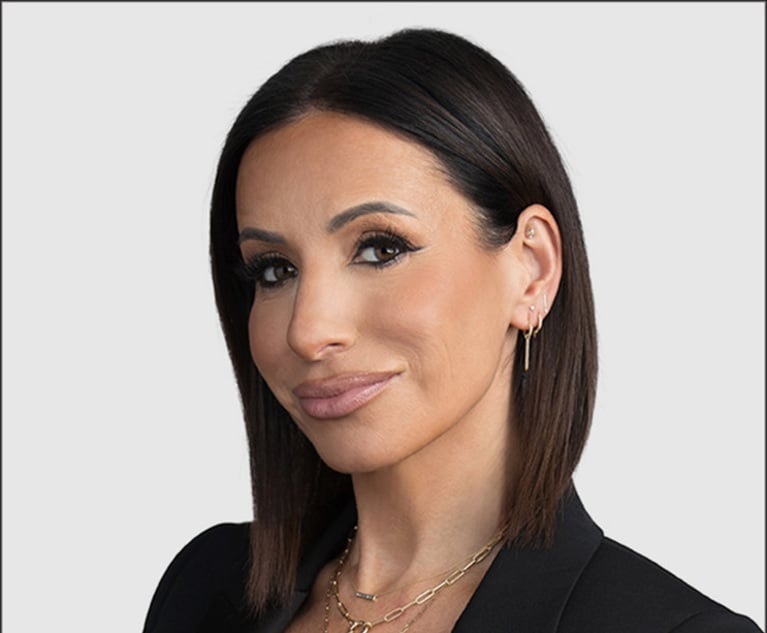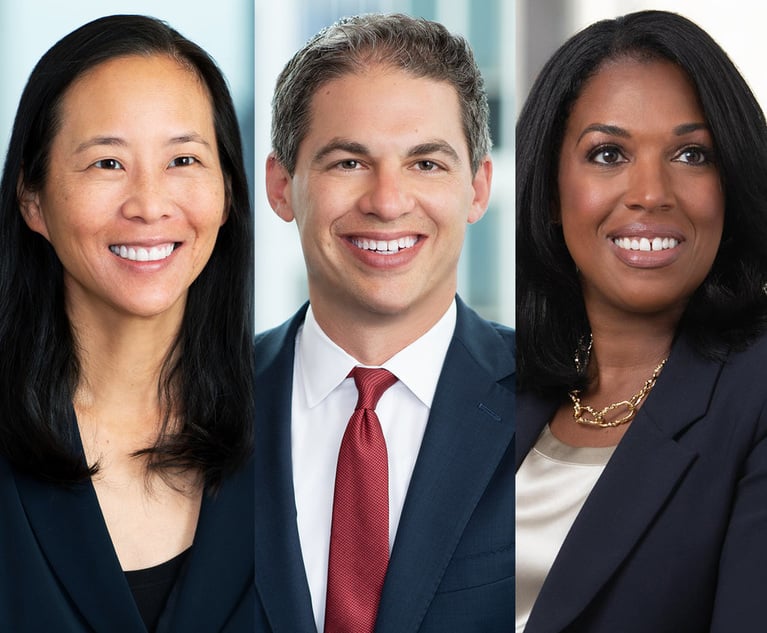Gibson Dunn posts record revenues as international expansion halts PEP growth
US firm continues two-decade long streak of increases in key financial metrics
February 14, 2018 at 02:54 PM
4 minute read
The original version of this story was published on Law.com
Gibson Dunn & Crutcher posted its 22nd straight year of revenue growth, earning more than $1.64bn in 2017, while the firm's net income also passed the $1bn mark for the first time, according to preliminary ALM reporting.
Profits per equity partner, however, took a slight dip to $3.24m as the firm added a Houston office, expanded internationally and increased its headcount.
Looking back over the financial year, Gibson Dunn chairman and managing partner Kenneth Doran described the results as positive. He explained that 2017 was a year of investment for the firm: among other developments, Gibson Dunn opened and staffed up an office in Houston to help strengthen the firm's energy and oil and gas presence, and recruited some 29 lateral partners across the globe – the highest number ever, according to Doran.
Despite heavy investments, Doran noted that Gibson Dunn continued a consecutive run of financial growth that stretches back more than two decades. In 2017, the firm took in revenue of $1.643bn, up 2.3% on the previous year, and a net income of $1.013bn, 3.6% up on 2016. That marks 22 straight years of revenue growth and 21 straight years of net income growth, according to the managing partner.
"All of that is against a backdrop of significant investment for the long term," said Doran. "We will be harvesting these investments this year, and the years ahead."
Gibson Dunn's profits per equity partner dipped by 1.1%, dropping to $3.24m in 2017 compared with $3.275m in 2016. That came as the firm's number of equity partners grew 4.7% to 313. In all, Gibson Dunn had 359 partners in 2017. Revenue per lawyer at the 1,275-lawyer firm also experienced a slight drop of 0.6%, coming in at $1.288m.
Doran acknowledged the slight decline in the partner profits metric, but also said the actual take-home compensation for Gibson Dunn partners in 2017 still increased to a record high.
"From my perspective, 2017 was a very strong year," he said.
A little more than half of Gibson Dunn's revenue stemmed from litigation and investigation matters, while slightly less than half came from transactional work, according to Doran. That breakdown has remained roughly the same for several years, he added.
As Doran noted, the firm had an active year in the realm of lateral hiring, attracting top-flight lawyers such as Nicole Saharsky, who served as an assistant US solicitor general and had argued some 29 Supreme Court cases when news broke in November about her joining the firm as partner and co-chair of Gibson Dunn's appellate and constitutional law practice. The firm announced in February its plans to open in Houston, later revealing that it had recruited a group of former Baker Botts energy partners to the new Texas outpost.
Outside the US, the firm added a litigation team in Paris, bringing in a group of partners from Ashurst to launch that group. That move came 50 years into the existence of Gibson Dunn's Paris outpost, which first opened in 1967. Gibson Dunn also grew in London in 2017, adding Sacha Harber-Kelly, who joined as a partner after departing the anti-corruption and bribery division of the UK Serious Fraud Office. And the firm expanded in Hong Kong with the addition of a team led by Paul Boltz, who had previously been managing partner of Ropes & Gray's office in Hong Kong.
Those growth efforts, said Doran, were aimed at broadening the offerings in some of its international offices. In Paris, for instance, that meant adding dispute resolution expertise to existing strengths in areas such as cross-border transactions, he added.
"It gave us the ability to add depth and strength to new practice areas," Doran said. "It's [about] trying to round out the practice and remain highly relevant for our clients."
The American Lawyer magazine will release its full report on the Am Law 100 in its May issue.
NOT FOR REPRINT
© 2025 ALM Global, LLC, All Rights Reserved. Request academic re-use from www.copyright.com. All other uses, submit a request to [email protected]. For more information visit Asset & Logo Licensing.
You Might Like
View All


Law Firms Close Southern California Offices Amid Devastating Wildfires

Trending Stories
Who Got The Work
Michael G. Bongiorno, Andrew Scott Dulberg and Elizabeth E. Driscoll from Wilmer Cutler Pickering Hale and Dorr have stepped in to represent Symbotic Inc., an A.I.-enabled technology platform that focuses on increasing supply chain efficiency, and other defendants in a pending shareholder derivative lawsuit. The case, filed Oct. 2 in Massachusetts District Court by the Brown Law Firm on behalf of Stephen Austen, accuses certain officers and directors of misleading investors in regard to Symbotic's potential for margin growth by failing to disclose that the company was not equipped to timely deploy its systems or manage expenses through project delays. The case, assigned to U.S. District Judge Nathaniel M. Gorton, is 1:24-cv-12522, Austen v. Cohen et al.
Who Got The Work
Edmund Polubinski and Marie Killmond of Davis Polk & Wardwell have entered appearances for data platform software development company MongoDB and other defendants in a pending shareholder derivative lawsuit. The action, filed Oct. 7 in New York Southern District Court by the Brown Law Firm, accuses the company's directors and/or officers of falsely expressing confidence in the company’s restructuring of its sales incentive plan and downplaying the severity of decreases in its upfront commitments. The case is 1:24-cv-07594, Roy v. Ittycheria et al.
Who Got The Work
Amy O. Bruchs and Kurt F. Ellison of Michael Best & Friedrich have entered appearances for Epic Systems Corp. in a pending employment discrimination lawsuit. The suit was filed Sept. 7 in Wisconsin Western District Court by Levine Eisberner LLC and Siri & Glimstad on behalf of a project manager who claims that he was wrongfully terminated after applying for a religious exemption to the defendant's COVID-19 vaccine mandate. The case, assigned to U.S. Magistrate Judge Anita Marie Boor, is 3:24-cv-00630, Secker, Nathan v. Epic Systems Corporation.
Who Got The Work
David X. Sullivan, Thomas J. Finn and Gregory A. Hall from McCarter & English have entered appearances for Sunrun Installation Services in a pending civil rights lawsuit. The complaint was filed Sept. 4 in Connecticut District Court by attorney Robert M. Berke on behalf of former employee George Edward Steins, who was arrested and charged with employing an unregistered home improvement salesperson. The complaint alleges that had Sunrun informed the Connecticut Department of Consumer Protection that the plaintiff's employment had ended in 2017 and that he no longer held Sunrun's home improvement contractor license, he would not have been hit with charges, which were dismissed in May 2024. The case, assigned to U.S. District Judge Jeffrey A. Meyer, is 3:24-cv-01423, Steins v. Sunrun, Inc. et al.
Who Got The Work
Greenberg Traurig shareholder Joshua L. Raskin has entered an appearance for boohoo.com UK Ltd. in a pending patent infringement lawsuit. The suit, filed Sept. 3 in Texas Eastern District Court by Rozier Hardt McDonough on behalf of Alto Dynamics, asserts five patents related to an online shopping platform. The case, assigned to U.S. District Judge Rodney Gilstrap, is 2:24-cv-00719, Alto Dynamics, LLC v. boohoo.com UK Limited.
Featured Firms
Law Offices of Gary Martin Hays & Associates, P.C.
(470) 294-1674
Law Offices of Mark E. Salomone
(857) 444-6468
Smith & Hassler
(713) 739-1250











